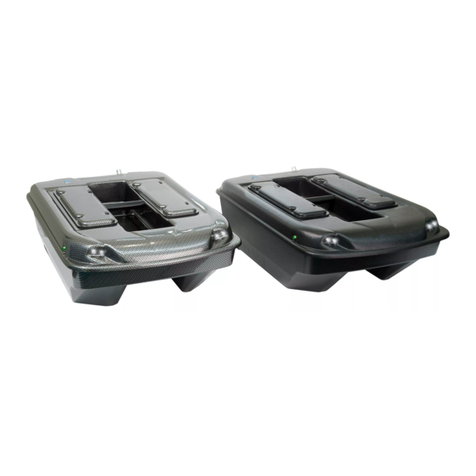
Now you should install the radio installation and plug in the receiver as follows (the
brown / black wire must be plugged in away from the receiver):
The remote control is programmed by us with an optimal program for the boat. It may
be useful to make small adjustments to the rashes of the servo's. But this doesn’t have to
be done.
1. Servo for jet steering left and right
2. Regulator / motor
3. Light dimmable
4. Servo for feeder flaps
5. Release coupling
6. nothing
B: if necessary external power supply for receiver
The 2.4 GHz system does not need an antenna on the boat. The receiver must be
taught to the transmitter as needed in accordance with the operating instructions.
It is important that the antenna of the receiver is as high as possible in height,this
menas that the antenna is later also as high as possible over the water level. As well,
no power lines may be located directly next to the receiver.
Plug an accumulator into the controller and turn on the system. (first radio installation,
then boat).
The controller is set automatically (can also be carried out analog in accordance with the
description attached to the controller). These are absolutely high quality components,
which are also responsible for a long life of the boats.
Quite the only thing they do not like is moisture and getting connected to the battery
incorrectly. By the last one mentioned they burn out immediately.
Now the Jet control can be adjusted 100% and the length of the Bowden cables
can be selected. The Servo's should never queue at full scale, but work
smoothly. The engine must run absolutely quietly, without generating any
external noise. The jet must also do its job absolutely quietly.
Lay the cables and wires as shown in the pictures above. The assembly is thus completed.




























